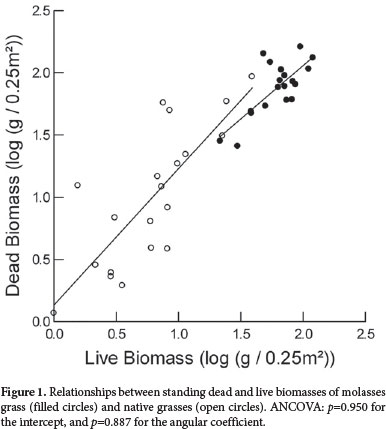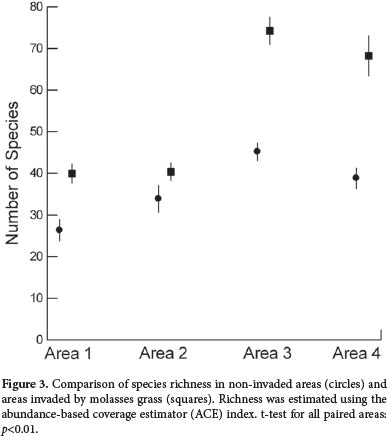In the Cerrado Biome of Brazil, African grasses constitute a serious problem, occurring in virtually all protected areas. Molasses grass (Melinis minutiflora P. Beauv.) accumulates more biomass than do most other species of the herbaceous stratum vegetation native to the Cerrado. In this study, our aim was to determine the impact of M. minutiflora on native vegetation, as well as (using simulations of fire traits) on the characteristics of fires, in invaded areas of the Serra do Rola-Moça State Park (Parque Estadual da Serra do Rola-Moça, PESRM), a protected area where fires are frequent, in the state of Minas Gerais, Brazil. Our main results are that M. minutiflora considerably increases the amount of biomass, becoming the main combustible plant in the campo-cerrado (grassy-woody savanna) fires in the PESRM; that the native monocot biomass is inversely correlated with the M. minutiflora biomass, suggesting suppression of the native herbaceous stratum; that eudicots are diminished by M. minutiflora, both in number of individuals and number of species; and that fires are more severe in M. minutiflora-invaded areas.
Cerrado; BehavePlus; biological invasion; fire intensity; savannah







